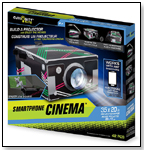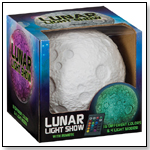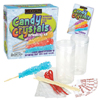|
|
Second Nature: Science Toys Are Smart Sells
“It’s about grouping items with a theme,” explained Dan Soderberg, an education and exhibit expert at the Maryland Science Center. “We have a NASA tie-in, so we group model rockets, lunar landers, Mars rovers together, making little dioramas of various outer-space scenes. The kids get excited, rush over to play with them and want them for their own.” Pam Mikula, owner of The Nature Store (an online store): “Special groupings draw attention in a way that focuses the buying. One thing leads to buying another.”
Other museum stores agree with this principle, as do retailers. “When Mars was in the news,” explained Derek Sanders, owner of Toys, Toys, Toys in Washington D.C., “I had every space toy I could find at the front counter, and all the kids wanted them. King Tut came to town? Mummies and archeology play kits went like hotcakes. Kids can’t always get to the museum when they want to, but they can come into my store every day.” Keeping things fresh and up-to-the-minute with the recent findings helps, too. Kids hear what’s going on from school and their parents. “We rotate our toys with the exhibits and IMAX shows,” said Jennifer Morehead, manager of Shop 4 Science, associated with the Science Museum of Virginia. “I used to be in ready-to-wear retail, and there are more seasons in science then there were in fashion.” All the museum stores agreed that under-$10 items are a must-have. “Kids have limited funds, so I always have lots of things they can buy themselves without asking their parents. Little kaleidoscopes, magnet toys, dinosaur-heads-on-a-stick. They see them, have the money and can get them. Very empowering,” offers Stacy Oslund of the New York Hall of Science gift shop. “We had a Grossology exhibit at the museum, and I stocked the store with all sorts of novelty items,” laughed Trotter. “Research,” extolled Jennifer Morehead. “Sometimes we can spend up to a year researching the right toys. It helps to know what you’re doing.” Many retail owners agreed: a little reading up on the science can go a long way. “It’s like helping kids with homework; always being one step ahead,” laughed Sanders. Grouping toys together and drawing attention to them. Taking advantage of what’s happening in science right now. Following what’s at the museum and mirroring their interests. Keeping things fresh and up to date. Under $10 items. Give some thought to your choices and do your research. Science and learning toys are selling. With these tips, you can sell them, too. |
| |||||||||||||||||||||||||||||||||
Disclaimer Privacy Policy Career Opportunities
Use of this site constitutes acceptance of our Terms of Use.
© Copyright 2025 PlayZak®, a division of ToyDirectory.com®, Inc.

 Taking advantage of what’s happening in the world of science is advantageous, too. Museum stores mirror the exhibits in the museum. Dinosaur exhibits foster stocking dinosaur toys. Mineral exhibits, mineral toys. “We had an insect exhibit and stocked up on Ant Farms … they sold out,” explained John Trotter, the assistant manager of Fernbank Museum of Natural History store.
Taking advantage of what’s happening in the world of science is advantageous, too. Museum stores mirror the exhibits in the museum. Dinosaur exhibits foster stocking dinosaur toys. Mineral exhibits, mineral toys. “We had an insect exhibit and stocked up on Ant Farms … they sold out,” explained John Trotter, the assistant manager of Fernbank Museum of Natural History store. 

